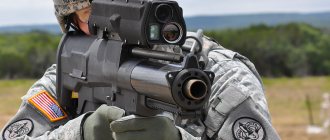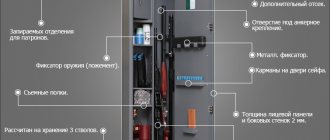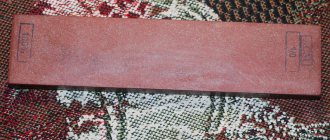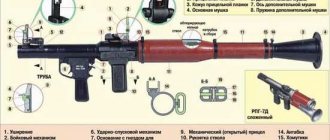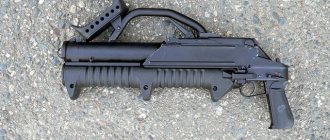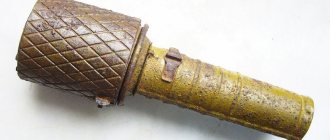Garnet jewelry available: garnet beads, garnet bracelets.
Garnet has high density and mechanical strength.
Hardness on the Mohs scale 6 - 7.5. These qualities contribute to the accumulation of garnets (mainly pyrope and almandine) in lake and coastal-marine placers. There are different versions of the origin of the name pomegranate. According to one of them, the stone received its name from the Latin word “granatus”, granular, reminiscent of the grains of a pomegranate fruit, which was also called the Phoenician apple.
According to other sources, the concept of “pomegranate” came into use around 1270. The medieval alchemist Albert Magnus contributed to this.
Nature has given the pomegranate a wide variety of forms.
The edges of the stone reveal wonderful geometry: here you can find rhombuses, trapezoids, triangles, pentagons, even narrow strips that combine in an incredible way in space.
Among the garnet crystals there are amazing specimens with 36, 48, 72 facets! It is noteworthy that garnets crystallize in symmetrical and compact forms, as if deliberately approaching a faceted ball.
Garnet is rich in its shades and varied shine, which varies from glassy to resinous, diamond-like in demantoid. Garnets are a large group of minerals from the class of silicates, similar in structure and properties, divided into 2 more groups according to their chemical composition.
Tactics for using the F-1 grenade
History has not brought to us the name of the designer of the F-1 grenade. Developed before the First World War, it has so far proven to be the cheapest to produce and the most feared to use in combat. In Russia, Germany and Poland it was called “lemonka”, in France and England - “pineapple”, in the Balkan countries - “turtle”.
The grenade was developed on the basis of the French fragmentation grenade F-1 model 1915 (not to be confused with the modern F1 model with a plastic body and semi-finished fragments) and the English Lemon system grenade (with a grating fuse), supplied to Russia during the First World War. Hence the designation F-1 and the nickname “limon”. The grenade was adopted by the Red Army with a remote fuse (“fuse”) by Koveshnikov. Ignition of the remote composition primer is carried out by a striker action mechanism. In 1939, F.I. was modernized. Khrameev. In 1941, instead of the Koveshnikov fuse, the UZRG fuse of the E.M. system, which was easier to manufacture and handle, was adopted. Viceni. In addition to the “lemon”, the grenade was also nicknamed “fenyusha” by the troops.
With the advent of rifle-mounted and under-barrel grenade launchers, the art of fighting with hand grenades began to be forgotten. But in vain. The effect on the target of low-fragmentation grenades cannot be compared with the work of the F-1 hand-held fragmentation grenade, known to both the military and the civilian population under the code name “limonka”. With minor design changes, this grenade has been produced in different countries for 80 years. “Limonka” is the most powerful of all hand grenades in terms of the lethal effect of fragments and the most convenient to use. The ribs on its body - the turtle - exist not at all for division into fragments, as is commonly thought, but for “grasping” in the palm, for ease of holding and the possibility of being tied to something when placed on a stretcher as a mine. The body of the F-1 grenade is cast from the so-called “dry” cast iron, which, when a high explosive (crushing) charge explodes, splits into fragments ranging in size from a pea to a match head, irregularly torn in shape with torn sharp edges. In total, up to four hundred (!) such fragments are formed. The shape of the grenade body was chosen this way not only for ease of holding. Until now, no one can explain why, but when a “lemon” explodes on the surface of the earth, fragments scatter mainly to the sides and very little upward. In this case, the grass is “mown down” completely within a radius of 3 m from the explosion site, complete destruction of the growth target is ensured within a radius of 5 m, at a distance of 10 m the growth target is hit by 5-7 fragments, at 15 m - by two or three.
Therefore, at close distances, a bulletproof vest will not save you from an explosion—shrapnel will cut your arms, legs, and face.
Even a small fragment in the neck is tantamount to a death sentence. Small fragments retain a penetrating lethal effect up to 100 m, large fragments up to 250 m. In confined spaces, in addition to the mass of ricocheting random fragments, the shock wave of this strong grenade itself causes concussion and incapacitates. The bulletproof vest is also useless.
In the infantry, for all these reasons, the F-1 grenade is used as a defensive grenade. In special forces - as a powerful means of suppression, when with small forces it is necessary to achieve real results in specific brutal circumstances. The outcome in special operations when conducting combat operations in non-standard situations often depends on the use of practical combat techniques that are not specified in regulations and cabinet regulations. The merciless power of the lemon ensures a turn of events in favor of the proactive and inventive, but only with its skillful use.
During World War II, SMERSH employees (“death to spies” - military counterintelligence of the USSR during the war), when carrying out operational fire contacts, shooting while moving with one hand from a pistol, held a grenade in the other hand, raised at head level, as a counterweight for a smooth move. The grenade was thrown from this position without swinging, instantly, if necessary, thereby sharply increasing its firepower. But they threw for a reason. At close ranges of operational combat “point-blank”, in the event of a sudden collision with an enemy group, the grenade was thrown behind the enemy’s back. This protected the thrower from his own fragments. At the same time, the enemy found himself “sandwiched” between small arms fire “at point-blank range” and a grenade explosion from behind.
In close combat practice, this simple technique is difficult to overestimate. It is especially valuable in street battles, when when the enemy suddenly appears close, there is no time to swing a grenade or it is impossible in a cramped room.
Without swinging, a grenade can be thrown quite far and accurately, without taking your eyes off the target or intuitively in the dark. But for this you need to develop the joints and muscles of the throwing hand - be it the right or the left. With this development, you should: holding a full-weight training grenade (filled with sand) with your hand, swing it, simulating a swing and throw, all the time, increasing the amplitude of the swing and gradually moving back the starting barrier of the throw. From the starting barrier, the grenade is sent forward by sharp efforts not only of the arm, but also of the muscles of the shoulder, chest and abdomen, but do not throw the grenade! Pump back and forth until it stops, gradually moving the limit of this stop! This throwing technique is used when it is necessary to throw a grenade into a narrow loophole located above human height.
The grenade can be thrown quite far and directly from the belt or directly from the grenade bag with or without a swing from below forward. This method is very fast and valuable because the enemy often does not have time to understand that the grenade has “went” towards him. The enemy is used to seeing a throw with an overhead swing. Training and development of ligaments and muscles is carried out similarly to a throw without an overhead swing with a gradual distance from the starting barrier. When throwing from below without a swing, in the same way as when throwing from above, sharp, explosive efforts of the muscles of the shoulder, chest and abdomen are activated. The method is unusual, but with certain training the range and accuracy of the throw quickly progress. In addition, depending on the circumstances, it is sometimes easier to “roll” a grenade towards the enemy (for example, through low-lying slots) in this way. Throwing from below is practical during operational combat in buildings, when there is no need to send a grenade far, but sometimes you need to throw several grenades quickly one after another.
When throwing a grenade from behind a vertical cover (around a corner), which happens all the time during combat operations in various kinds of labyrinths, it is advisable not to lean around the corner and expose yourself to oncoming fire. The goal is determined intuitively or by ear. This method of throwing allows those who have trained to throw a grenade from below, from the waist, without a swing, to throw a grenade quickly, far and accurately, with both the right and left hand, because the same muscle groups are involved here, the development of which is carried out similarly to the above.
If it is necessary to throw a grenade while lying down along a horizontal loophole, it is thrown from the waist, if possible placing a stone, a duffel bag, etc. in front of you, whatever is at hand, as a temporary shelter for protection from your own fragments.
If there is a need to throw a grenade further, this is done from the kneeling position. To do this, from a lying position, they sharply push off the ground with their hands, pushing the torso and pelvis back so that the legs are bent at the knees. Accelerating the movement, rise to your left knee, placing emphasis on your right leg. This will allow you to make a wide backswing for the throw. Following the throw, fall sharply and “squeeze” into the ground. To master this technique, all the above-described movements are practiced repeatedly “idly”, without releasing the training grenade from the hand, making a wide swing, increasingly increasing the amplitude of the swing, gradually, as in the previously described throwing techniques, “pushing” back the starting barrier of the throw. When throwing from the knee, all the same muscles of the throwing arm, shoulder and especially the body are activated in a sharp, explosive manner. As you become trained, you need to achieve unity, simultaneity and speed of movements. Everything is done almost instantly.
If you throw a grenade this way from behind some kind of cover (a hump, a pile of rubble, etc.), your knees should not move. If you pull one leg forward while swinging, as beginners do, the movement will slow down, the thrower will involuntarily move forward and after the throw he may fall not behind the cover, but onto the cover with his chest. You need to learn how to rise sharply from the ground, throw a grenade, and fall sharply before the enemy is able to react and shoot. The method described above has always been used by scouts and fighters of assault groups when it was impossible to crawl close to the enemy without being noticed.
A similar method is used to throw a grenade into a horizontal slot, an embrasure located above the ground at waist level. But at the same time they throw the grenade, swinging it from the side along the horizon.
This is the most difficult target for grenade launching. Training the shoulder joint and the “throwing” muscles of the shoulder and core is carried out in the same way as in the cases described earlier.
After throwing a grenade, you need to retreat behind cover and hug it. There is no need to be curious about how your grenade will work - it will work without your participation. Don't fall under its fragments. Consider the direction of their possible ricochets. After the grenade explodes, count down in your mind “twenty-two, twenty-two” - this will be two seconds during which the fragments will go away or settle down, and do what you need according to the situation - dash in the right direction, shoot from a machine gun in dark corners, etc. In a specific assault situation, not only F-1 grenades are used. Anti-tank grenades - from the past war and especially modern cumulative ones - have monstrous destructive power and are indispensable when storming multi-story buildings, pillboxes, bunkers, etc. But they instantly go off when meeting any obstacle, and when throwing them you need to make sure that you have time to hide behind cover and close your ears before the grenade reaches its target. During training, this is determined by the sound of a dropped practice grenade. For the above reason, it is necessary to develop the habit of making sure that under no circumstances does the grenade hit anything when swinging, so that there are no bushes, branches, wires, etc. along the path of its flight.
SMERSH assault and sabotage groups used mines from an 82-mm Soviet mortar as special-strength grenades. They were four times heavier than the F-1 grenade, and therefore throwing them required great physical strength and additional training. But the effect of their use was terrible and exceeded all expectations.
Having mastered the above-described techniques of throwing grenades from various positions: lying down, from the knee, without a swing, etc., you should persistently train not only to accurately hit the target, but also to achieve the maximum speed of throws, so that in a combat situation you will not come under aimed fire or a stray bullet. To this end, when practicing grenade throwing, you should mentally count 2 seconds (to yourself - “twenty-two, twenty-two”) from the start of the technique, trying to release the grenade and fall behind the cover before this time expires. After these two seconds, the instructor training beginners fires a blank cartridge, simulating an enemy shot.
If the situation allows, grenades can be thrown with a strong swing from behind the head and even with a run - this significantly increases the throw range. In this case, throwing a grenade is carried out with the same natural movement with which each of us had to throw a stone. When training, learn to make a wide, free swing and put muscle strength not only in your arm, but also in your whole body, into the throw. When throwing while standing, put your right leg back and focus on it - this will increase the throw's distance. The greatest range is achieved if the grenade is fired at an angle of 45-50°. To do this, try to throw the grenade more up than forward. You can and should learn to throw a grenade over long distances. By training regularly, you can confidently reach distances of 50 m and beyond with lemon. The F-1 grenade range record, set in 1951, was 87 m.
Strong fragmentation F-1 must be thrown tactically competently. If it is impossible to “reach” the enemy with a direct throw, the grenade is thrown “on a ricochet” so that it bounces off something and falls closer to the enemy behind cover. A very difficult target to throw is a trench with a parapet. To defeat it, a grenade is thrown only in a suspended manner so that it either falls into the trench or rolls into it along the parapet. In this case, you need to throw the grenade not so much forward as upward, and the force of the throw should be calculated in such a way that the grenade is at its end and falls almost vertically from top to bottom. You should also throw grenades at enemy personnel located openly. Having fallen vertically to the ground, grenades roll less to the sides.
In the mountains, no matter where the enemy is relative to you - higher or lower, the grenade is thrown in such a way that it falls above the enemy and rolls into his trench or causes a rockfall that “covers” the enemy. In an open rocky area, if circumstances permit, it is better to throw a grenade up the slope not directly in front of you, but at an angle so that you yourself are away from the back rolling of the grenade and the direction of a possible shower of stones. In this case, it is necessary to take into account the safety of comrades located on the side.
Throwing grenades in the forest requires greater accuracy than in open areas. The specifics of the forest determine the throws of grenades at point-blank range. When dealing with an enemy hiding behind a tree, a grenade is thrown so that it explodes behind his back. To “get” an enemy dug in or lying behind a tree, a grenade is thrown up into the crown of the tree, where it is delayed by its branches and, falling vertically down on the enemy, explodes in the air or next to him (this is a nasty invention of German rangers, tested in the fight against partisans ). In wetlands, the pomegranate is thrown onto an island, hummock or shallow place. The thickness of the water significantly reduces the damaging effect of fragments.
When throwing a grenade at vertical high targets (windows), you need to take it higher, at the top edge of the target, since the grenade loses speed and gradually deflects downwards.
At running targets, grenades are thrown in anticipation, ahead of the target, in accordance with the speed of its movement, so that they fall in front of the enemy, and he runs at them at the moment of the explosion. It should be taken into account that during the burning time of the fuse (4 seconds), an enemy running at an average speed of 3-3.5 m/s will run 12-15 m.
Therefore, when preparing to repel an attack, it is better to outline a line in advance, upon reaching which the enemy should launch a grenade. This line should be 15-20 m further than the line to which the grenade can be thrown, taking into account its rollout after the fall. Grenades exploding in front of the advancing chain will force the survivors to stop and lie down.
They act in a similar way when the enemy runs away from you (when detained). The same should be done with a retreating enemy.
A special forces soldier has to throw grenades in the dark almost more often than during the day.
The night is never dark - it alternates with flashes of gunfire, artillery explosions, and flares. Having discovered a target with such a flash, it is recommended to immediately fix its direction and distance to it, tying it to some landmark, for example, a bright star, a tall tree or building that stands out against the background. A throw corresponding to a certain distance to the target is ensured by orientational-spatial efforts, familiar from a throw at the same distance during the day. Throw in muscle “dark” memory. This is the only way to throw a grenade at a given distance, and you can't do it better.
Trust familiar and practiced sensations - they are the ones that will never let you down. The development of such sensations and muscle-spatial memory occurs in a very simple way.
When throwing grenades from memory, our imagination should, as it were, illuminate the area of the terrain lying ahead, and allow us to mentally see the location of targets and other objects all the time. During daylight hours, the trainee looks at the target, then closes his eyes and throws a grenade. As soon as the grenade “goes”, the eyes open, and the result is visually tracked in order to take into account errors and coordinate the process. Knowing the results builds a skill. At the same time, the spatial-coordination and power sensations from the throw are clearly compared with its results. Corrections “right-left-closer-further” are made by changing the corresponding forces and the position of the grenade launcher relative to the target. All efforts and the general coordination state of the body at the moment of a successful throw are remembered by “dark” muscle memory and general coordination memory.
During subsequent throws, these efforts and coordination are reproduced by muscles and spatial memory when the imagination “illuminates” the area with the target. The method gives amazing results. With persistent training, success is achieved quickly, and the results of throwing grenades in the dark are no different from those achieved during the day.
Then, using the same principle, grenade throwing at hard-to-see targets is practiced. First, it is performed in the gathering twilight, then by the light of a fire, then in pitch darkness, focusing only on trained night vision and an animal sense of purpose. Only in this way will the trainee learn to find a barely noticeable target and correctly determine the distance to it in conditions of poor visibility (in smoke and fog). In this case, before throwing, as necessary for the educational process, the instructor illuminates the target with a flashlight beam for 1-2 seconds, no more. After developing solid muscle-strength spatial coordination skills, you can begin throwing grenades at targets, the location of which is determined in the dark by sound.
To determine the direction of the sound, trainees stand in a semicircle and close their eyes, the instructor silently moves in front of the formation and, stopping in one place or another, gives a sound signal - knocks the shutter, clicks the aiming bar, etc. The cadets are required, without opening their eyes, to point with their hand to the location of the sound source. Then the instructor allows you to open your eyes and check. Further, the exercise becomes more complicated - those who memorize with their eyes closed make several turns, and the sound comes from the side or behind them. It is necessary to determine the direction of the sound and the distance to it.
Grenade throwing is carried out at a sounding target with eyes closed according to the above-mentioned technique of “mentally illuminating” the target and applying muscle-coordinating efforts. When the grenade “goes”, you are allowed to open your eyes and coordinate the process.
Then the distance to the targets changes. Grenade throwing begins at night. Tin sheets are suspended inside vertical sounding targets (windows), which produce characteristic sounds when hit. To the right and left of the target, sheets of cardboard or plywood are hung, which, when hit, produce completely different sounds (different to the right and left of the target), which the grenade launcher is guided by, making corrections by hearing if he misses. The various milestones to the target are the same as during the day, so that the cadets can focus on the familiar muscle-coordination sensations of a throw.
The process becomes even more complicated. The target is a wooden frame with a sheet of tin pulled on a rope. The twine operates the “clanging” mechanism mounted on the frame. Despite the apparent difficulty of throwing a grenade at a moving target in the dark by ear, the results grow faster than one might expect. But that's not the point. As a result of training according to the method described above at night, throwing results during the day increase by 40-50%. This can be explained by the fact that in the dark, coordination internal reserves are mobilized, the coordination sense increases, and so-called “internal aiming” appears, which simply does not allow the thrower to throw a grenade into the wind.
As training progresses, the loads and options for grenade throwing increase. You must learn to throw a grenade far, quickly and accurately under any load and after any load in any difficult conditions. Try to quickly run 50-70 m and throw a grenade at a familiar, practiced target. What's it like? The effort expended while running will inevitably affect the range and accuracy of the throw. However, no matter what strenuous actions you perform before throwing (in a real combat situation they will certainly occur), no matter how tired and in a hurry you are, you still need to hit the target with a grenade! The combat situation is indifferent to excuses. Hit or missed. Yes or no. “Put down” someone or “put down” you. Learn to “catch” the target and determine the distance to it while running, while you swing. Gradually increase the distance and speed of running, alternate running with throws, hand-to-hand combat and shooting, crawling, carrying a comrade, etc. All this will have to be done in a combat situation. While practicing throwing grenades at windows and cracks, learn to make a rapid throw of 100-150 m, overcoming obstacles that may be encountered in the city - fences, fences, heaps of broken bricks, narrow holes, climbing walls and jumping off them. When practicing throwing grenades, accustom yourself to the unexpected - the enemy always appears suddenly and where he is not expected.
When throwing a grenade from a place and in motion, to complicate the exercise, stand with your back to the target, then, turning sharply, throw the grenade. When moving across rough terrain or in a populated area, set yourself a mental goal: to fire a grenade at a target detected with peripheral vision in a trench, in a hole, in ruins, behind anything that can serve as cover.
Exercises in throwing grenades will be more successful if you first perform throws for accuracy, and at the end of the training - for maximum range. Loads should be increased gradually, avoiding stretching of muscles and ligaments from excessive loads. Before training, the muscles need to be given a warm-up, rubbed, stretched and warmed up. At the end of the training, the instructor gives the cadets the maximum load through “I can’t”: “You can!” Forward!".
This is the general principle of dynamic training. Gradually, the grenade throwing time increases to 3-4 hours per training, from all possible positions, in all expected situations.
When practicing throwing grenades at all targets and under all conditions” at different distances, etc., after each successful throw, try to remember with muscular-orientational-spatial memory the efforts of the muscles, body, supporting leg and throwing arm. They themselves are very bright and fit very well into the “dark” muscle-orientation memory. Try to “get attached” to these sensations on subsequent throws. By doing this you program yourself for possible situations - you create a combat dominant.
In the situation of close operational combat, which changes every moment, there is no time to “turn on your brains” - you have to fight back using reflexes. The necessary reflex is produced by an internal dominant attitude programmed for a specific situation. During a battle to defeat, you have to rely on the combat support you brought with you, and on what you remove from the killed enemy. Fulfilling the requirement - not a single grenade misses the target - is not that difficult, and with persistent training you will wonder how it is possible to miss a grenade at all. The process of grenade throwing itself is a fascinating sport, biomechanically as close as possible to the natural instinctive movements of a person.
There is one more aspect. It is known that hand-to-hand fighters shoot poorly and are poorly trained in accurate shooting (sometimes there are pleasant exceptions to this rule). But thanks to physical and coordination training, hand-to-hand fighters in a very short time learn to masterly wield a grenade, throwing it very far, quickly and truly with diabolical accuracy. Moreover, the old-time special forces, aware of their shooting “Achilles’ heel,” sought to compensate for this deficiency with increased skill in grenade throwing. And they did the right thing from a tactical point of view.
Operational combat to destroy anywhere: in a city, in a forest, in any rough terrain - takes place mainly at a short distance. The short distance in this case is the grenade throwing distance. As practice shows, at such distances it is not the one who is bigger or who shoots better who wins. The winner is the one who has the most grenades, who uses them first, and who can throw them quickly, accurately and far. Hand grenades are pocket artillery. The F-1 grenade with its avalanche of fragments creates a denser kill zone around itself than an automatic burst. It is not always possible to stop an advancing chain even with dense automatic fire, but with the group use of lemons it is always possible. "Limonka" is cruel and merciless. Even if it doesn’t kill you with a shrapnel, it will concuss you, stun you, fill your eyes with sand, knock you down, knock your weapon out of your hands, in short, scatter the advancing formations.
When a reconnaissance group breaks through from a ring, grenades thrown simultaneously by each fighter in their sector and then thrown again after 10-15 steps make a hole in any chain of those around them; 12-15 F-1 grenades, thrown in the above manner along a front of 50 m and then 10-15 m deep, leave behind a blind spot, which those breaking through expand with automatic fire. At different times, many - both ours and not ours - broke through in exactly this way. Therefore, they tried to take the weight of the F-1 grenade as much as the number of cartridges they took. The hand grenade is a melee weapon. An indispensable weapon that has an undeniable advantage at short distances. A normal enemy is afraid of automatic weapons much less than of an “iron turtle” - you can dodge a bullet, but not a grenade. Grenade weapons are flexible. It is used when you need to reach an enemy holed up behind cover. A grenade can be rolled into any crack, thrown flat and vertical in any direction. The sight of a hissing grenade falling nearby without a ring plunges an experienced person into horror - he knows what will follow and tries to rush away from it for at least some kind of cover. And if there is no shelter, he dares to “kick” it to the side or even back to the sender (this also happens) - there is still no other way out. Therefore, a knowledgeable special forces soldier, having pulled out the ring and counted down the fuse for one second after the clap (in his mind - “twenty-two”) - you can’t tempt fate anymore, the UZRGM fuse does not always burn for the required 4 seconds - will throw or roll the grenade so that it stops about two meters -three from the enemy and he couldn’t reach her. All this needs to be worked out during training sessions.
Always be on good terms with a grenade. In a duel between a man and a grenade, the grenade always emerges victorious. The "Old Turtle" F-1 is a weapon too powerful to be allowed to fall into oblivion.
A. Potapov
